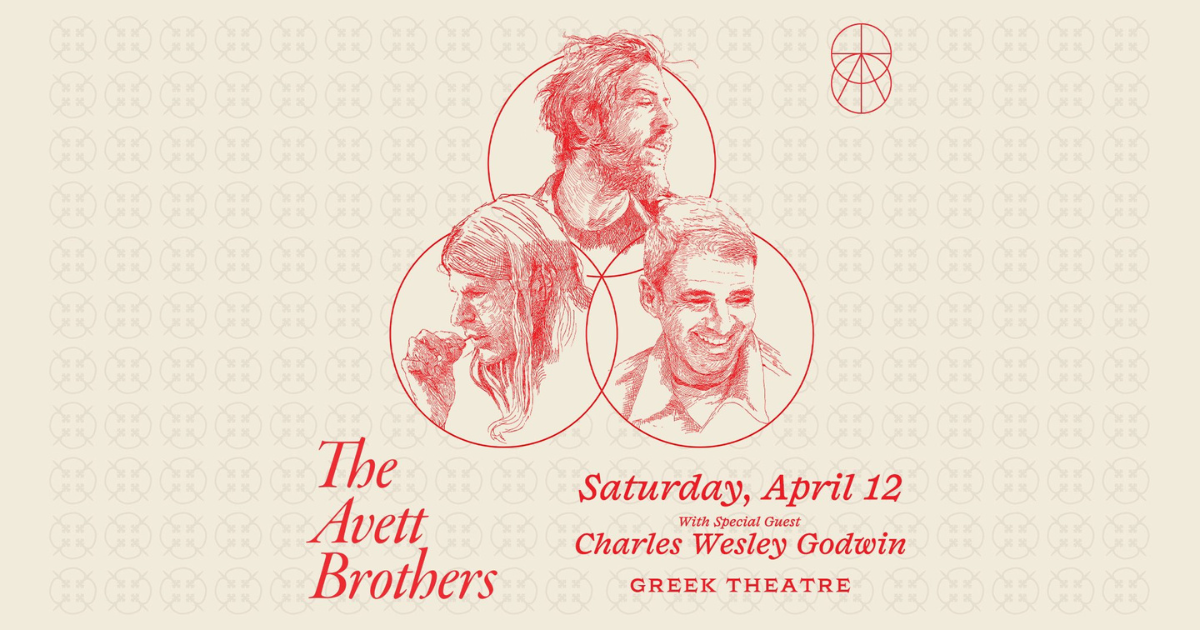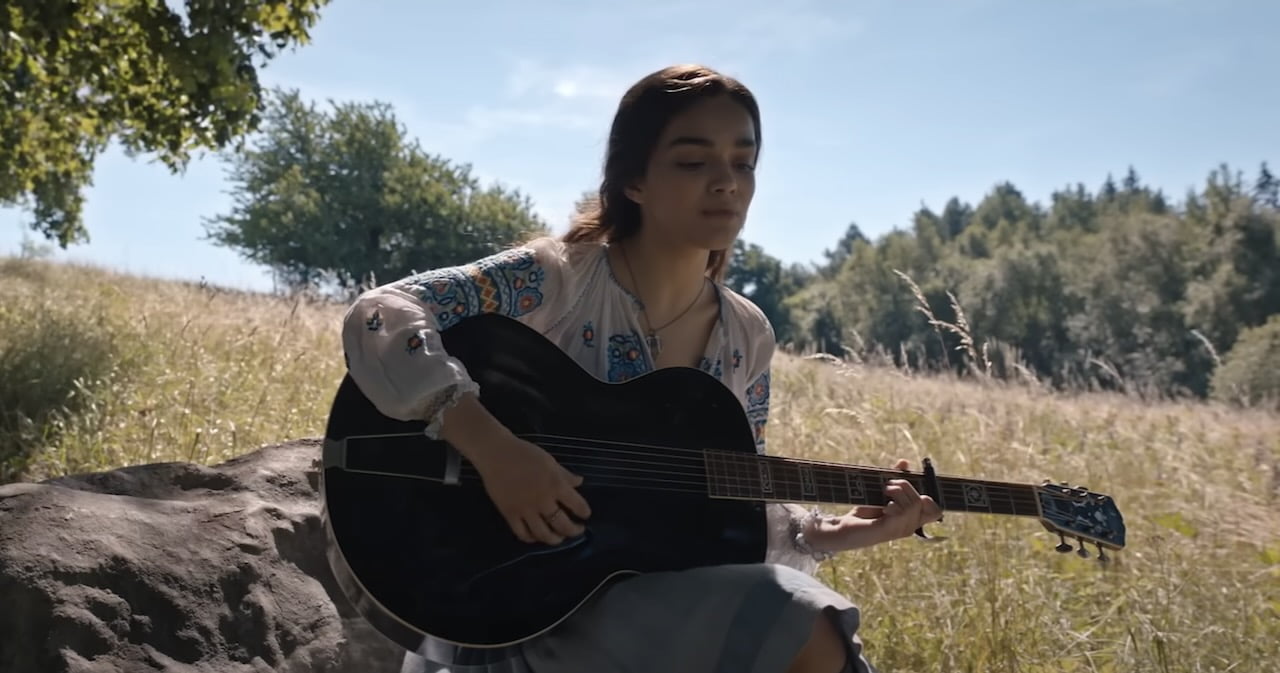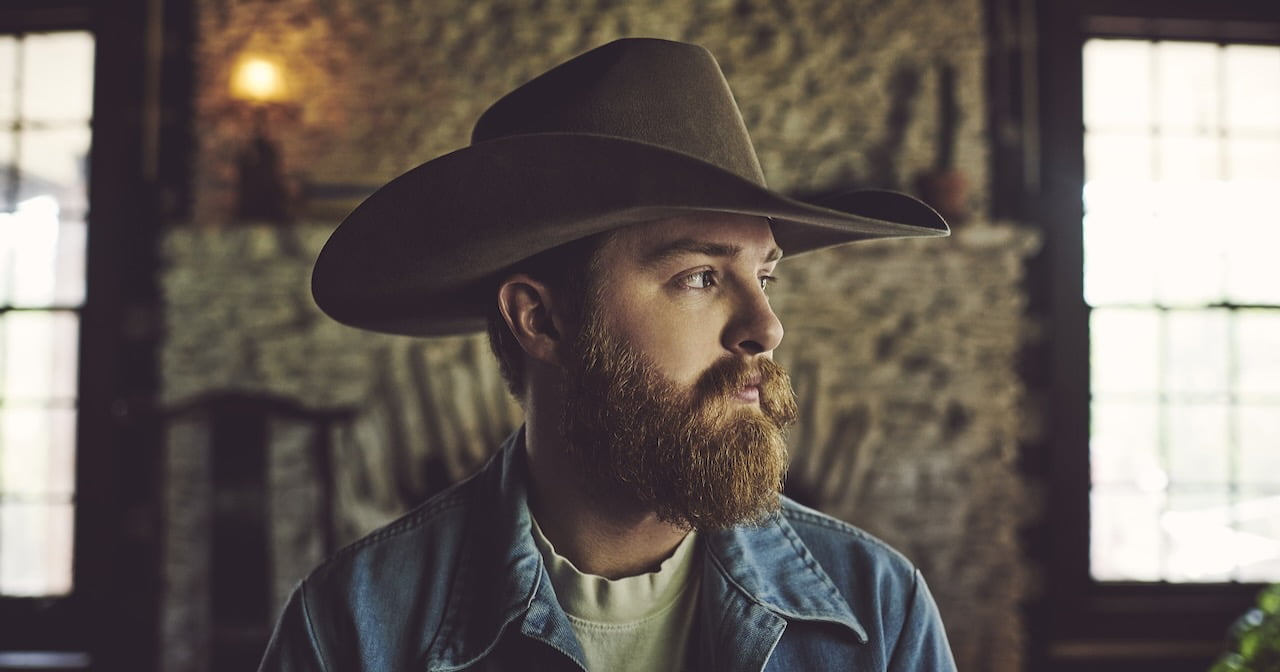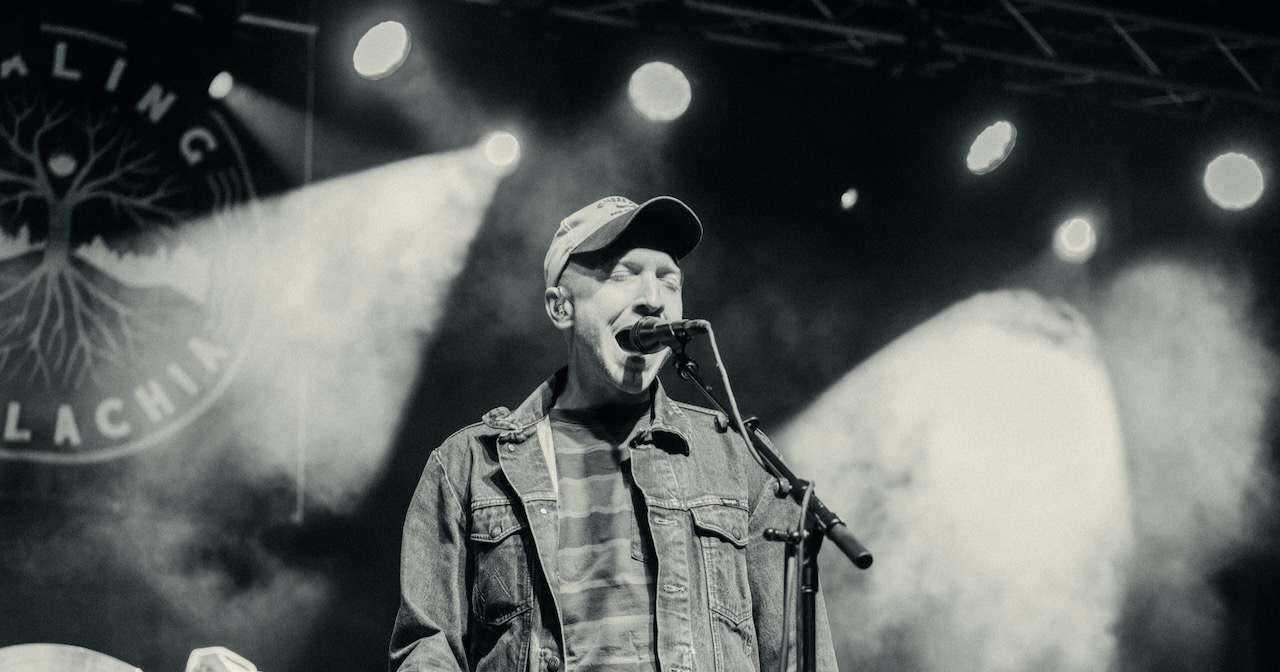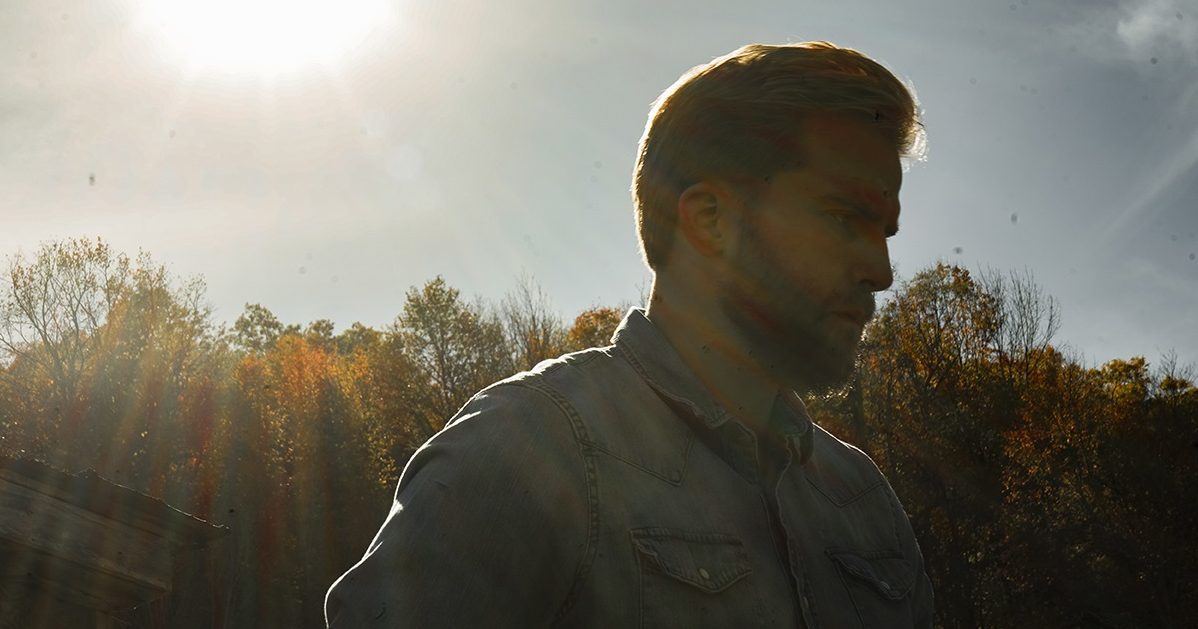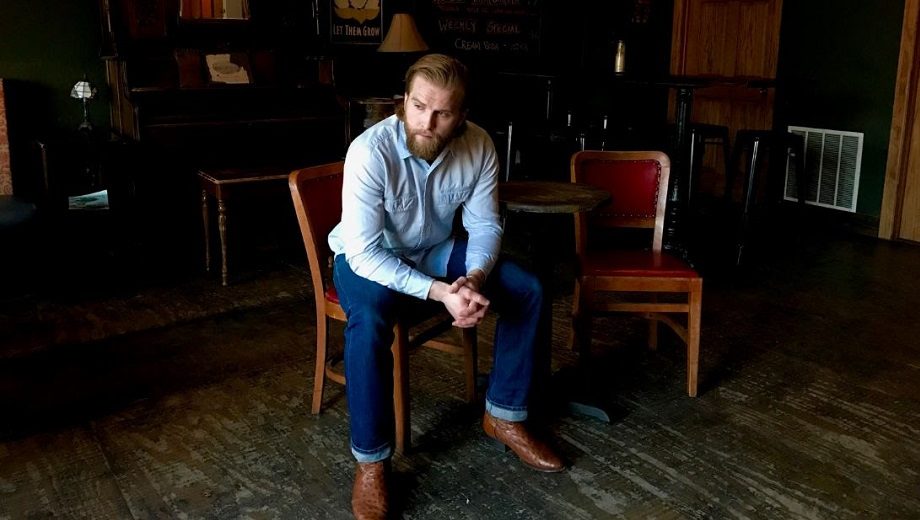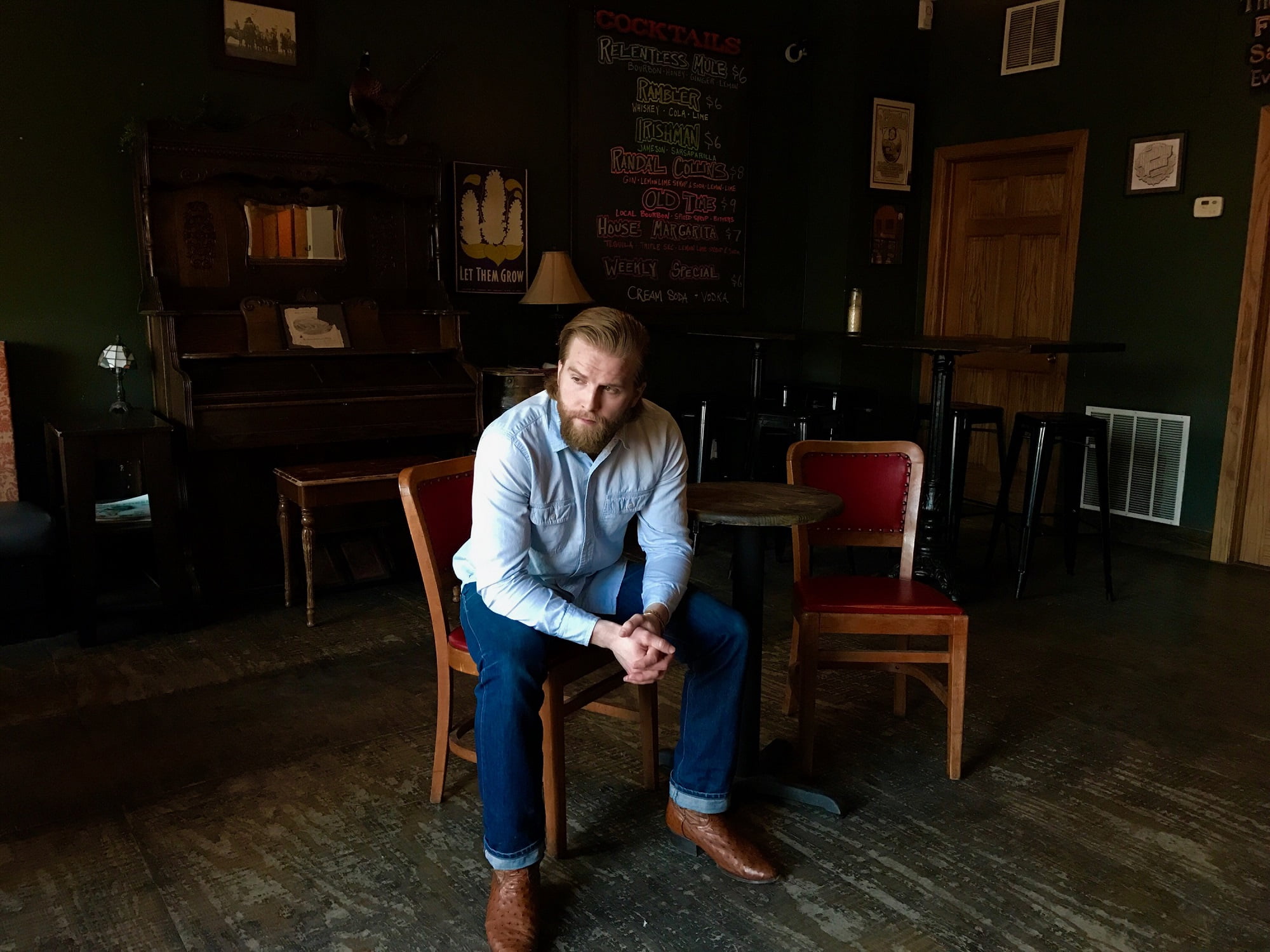Tag: Charles Wesley Godwin
6 of the Best Roots Songs on ‘Songbirds & Snakes’
Years before Katniss Everdeen became the bow-wielding, redneck antihero of impoverished coal-mining District 12, there was another — Lucy Gray Baird. In the new movie adaption of the dystopian prequel to the original Hunger Games trilogy, Baird must brave the deadly annual games as well as future-President Coriolanus Snow’s affections.
If it sounds like the makings of a country murder ballad, well, you’d not be far off. Aside from being a multi-million dollar blockbuster event, the new film, officially titled The Hunger Games: Ballad of Songbirds and Snakes, features an excellent original soundtrack produced by Dave Cobb and chock-full of BGS Friends and Neighbors we know and love. The rootsy songs are the perfect backdrop for boot-stomping bar scenes and the desperate struggle against an authoritarian regime that eventually led to the villainous Snow’s power grab. They’re also just plain good!
If you’re new to the Hunger Games, to these artists, or to roots music, we’re happy to be your guide. With performances from Molly Tuttle, Billy Strings, Sierra Ferrell, Charles Wesley Godwin, Bella White, and more there’s something here for bluegrass and Americana fans of all ages. But there are also hidden gems in Rachel Zegler’s performance. Zegler, who portrays Baird, plays a guitar influenced by a very famous finger picker indeed.
In no particular order, here are six of the best roots tunes on the official Hunger Games: Ballad of Songbirds and Snakes movie soundtrack.
“The Garden” – Sierra Ferrell
A slow-moving acoustic, country-ish standard with emotional fiddle swells, Americana firebrand Sierra Ferrell performs “The Garden” on the official soundtrack. The tune features a wistful dream of a green garden watered with something other than salty tears, and of better days ahead.
“Bury Me Beneath the Willow” – Molly Tuttle
Together, Molly Tuttle and Dominick Leslie provide the guitar and mandolin parts heard throughout much of the film, but also on “Bury Me Beneath the Willow.” This tune is more of a bluegrass standard and features Tuttle’s iconic picking style and vocals. The lyrics speak of deep betrayal by a lover.
“Nothing You Can Take From Me” – Rachel Zegler
In the official featurette video for this tune, Rachel Zegler whips a gathered crowd into a barn-stomping frenzy with her vocal performance on “Nothing You Can Take From Me.” While District 12 workers clap and dance and Zegler sings, Molly Tuttle revealed in an Instagram post that she provided the guitar parts.
“I played Lucy Gray Baird’s guitar parts and Dom [Leslie’s] parts are in the Covey Band,” Tuttle said in her Instagram caption. “I was nerding out the whole time we worked on this. Fun fact: the guitar I recorded with is the same one that you see [Zegler] play in the movie. The choice of guitar was inspired by the archtop Gibson that Maybelle Carter plays.”
“Burn Me Once” – Bella White
Bella White’s haunting, vibrato-filled vocals hang in the air on “Burn Me Once,” a finger-picked acoustic tune. The lyrics speak to being heartbroken and wishing for true love with a new, more mature partner.
“Cabin Song” – Billy Strings
By far one of the fastest, hardest-driving tunes comes – perhaps unsurprisingly – from Billy Strings. Employing his famous guitar-picking skills on “Cabin Song,” Strings sings of wishing to go back to the woods.
“Winter’s Come and Gone” – Charles Wesley Godwin
Seasonally appropriate given the movie’s November release date, Charles Wesley Godwin’s smooth but gritty vocals lends the perfect tinge of darkness to lyrics about a little bluebird, being left in the rain and snow, and not having enough money to see the winter through.
Even if you’re not a fan of The Hunger Games, it might be worth hitting up the theatre to support roots music featured in such a high-profile and recognizable title. Or, you know, you could just download, stream, or purchase the soundtrack — it’s available on Spotify, Apple Music, or wherever you get your folk-y tunes!
Lead image of Rachel Zegler as Lucy Baird screenshot from The Hunger Games: The Ballad of Songbirds & Snakes (2023) Special Feature ‘Music.’
On Western White Pines (Deluxe), Colby Acuff Gives Country Roots an Idaho Spin
There was a time when “Western” influence was a pillar of what we knew as country music. Now, the genre’s center of thematic gravity has shifted to the Southeast, and with that shift the Western influence has waned – but artists like Colby Acuff still uphold this mantle.
The thing is, Acuff’s version of “Western” life may not be what you envision.
A native of Idaho, Acuff is more at home in the craggy hills, tall pines and high-mountain streams than out on the open plain. The trails he sings of are often logging roads, and the dust on his clothes comes from mining operations. But the mystique of the Western U.S. is still just as intoxicating, especially to a back-east audience.
For years Acuff balanced regional tours with a side gig as a fly-fishing guide, but these days, the bait he’s throwing is old-school country and what he’s catching is some nationwide, early-career momentum. One of the few major label Nashville artists with a traditional sound and style, this year has seen Acuff release his debut album (Western White Pines), make his Grand Ole Opry debut, and tour with fellow breakout artists like Charles Wesley Godwin – paying his van-life dues along the way.
In mid-September, Acuff added six more tracks to the album with a deluxe edition release – every bit as rootsy and Western as the initial project – and next year he’ll hit 13 stadiums with superstar Luke Combs. While he was in Nashville for this year’s AmericanaFest, BGS caught up with Acuff about his growing platform and why he’s all about a view of the American West most people have never seen.
How are things going on the road? Your world looks pretty exhausting at the moment, but also a lot of fun – and I dig the gas station food reviews. What do you think you’ll remember most from this season of paying dues?
Colby Acuff: Well, hopefully all of it. I mean, I think it’s kind of like anything else – the things that stick with you are either the really good things or the really bad things, and fortunately, we haven’t had any really bad things. I think I’ll just remember the good times. Driving almost 65,000 miles this year in a van with six or seven guys? What’s not to remember? [Laughs]
We’ve been really, really fortunate to where every year it just seems like it’s getting a little bit bigger. For me just being a kid from Idaho, I don’t know if I ever saw it getting out beyond the county line, so I’m very happy and very pleased.
You made your Grand Ole Opry debut this summer. What was that experience like?
That was surreal. It’s still crazy to me that I got to do it. I’ve always said I’m typically the last person who you’d invite to anything. I mean, we don’t get invited to too many things – we just keep doing our own thing, and that’s great. But it means anytime we do get invited to something like that, I’m always pretty shocked. To have the first one out of the gate be the Opry, who not just included us but also include us with such kind words and open arms, it was an amazing experience.
It is interesting they were one of the first institutions to recognize you – but then again, it makes sense. You have a style very rooted in traditional country and Western sounds – even some bluegrass. That kind of clashes with the modern scene, right?
Everything we’ve done has a ton of grassroots, a ton of bluegrass influence in it, but it is really country/country folk. Our biggest thing is we haven’t really ever been defined – and I don’t know if anybody actually really knows where to put us! My whole goal is to make music that’s different and that’s good, music that means something, and we’ve found fans in that. I wouldn’t tell anybody that we’re a bluegrass band by any means, but I would say that if you’re a fan of bluegrass, there’s definitely stuff in our catalog you will enjoy.
The new deluxe version of the album has six new songs, for a total of 16. You’re singing about nature and Western life, but also chasing dreams – and even what happens when you catch the dream. Where did these new songs come from?
I think this whole record is Western music, and a lot of times people think that’s cowboys and that kind of situation. But I’m not a cowboy. I am from the West. I grew up in a very Western household from Idaho. But I’m from a mountain town, not from the plains. There’s cattle and stuff where I’m from, but it’s mostly loggers and lumber and paper mills and mining, and it’s a totally different side of the West that I don’t think a lot of people realize is up there. I mean, the neck of the woods I’m from is very similar to Kentucky, just more pine trees. It’s big on fly fishing and a lot of rivers, big lakes and big trees. And that’s a side of the West I want to represent, so I tried to basically form an entire record around it. This is potentially unknown to many people, but this is where I’m from.
“Movin’” is such a feel-good, timeless country track – where did that track come from?
My favorite part about “Movin’” is definitely the fact that it’s super easy on the ears, and at face value, it doesn’t seem as deep. But really the song is super deep to me because it’s about everybody who has decided to chase the dream with me. It’s a lot to ask somebody, to chase a dream with you. And not only myself and my girlfriend, but my whole band and their families have all moved to Nashville to do that. Don’t let the rear view make you sad. We’ll get there, we’ll figure it out. That whole thing is based around the fact that we’re all going and we’re looking forward, not backwards.
Speaking of dreams, tell me about “Livin’ Too Close to the Dream.” What’s this one about?
When we started out, before I even moved to Nashville, I’d go out to the local bar or whatever in Idaho with my friends and I’d run into people who’d be like, “Man, you’re really doing it. Congratulations, blah, blah.” They’d be like, “You must be out there living the dream.” And I’d be like “Wellll, I’m really close.” And then it turned into a joke where when you’re living too close to the dream. You’re living in limbo, you’re trying to climb up the mountaintop, but the road conditions are shitty. … We’re living too close to the dream now. [Laughs]
You’ll be touring with Luke Combs and doing some stadiums next year. That’s got some living the dream potential, right?
Oh God. I mean, I can’t thank Luke enough. I just couldn’t believe we got the phone call. There’s not a bad time to go play 13 stadium shows.
Are you guys going to work up a special stadium sized set, or how does that work for a roots band?
We will go out there and wave our flag. We’ll do our thing. Every single stage that you play, you got to earn that stage. I don’t care what it is. If it’s a sold out a stadium or some empty bar, you don’t walk on stage owning that stage. You got to put that set in to earn it and they got to give it to you. So we’ll do that just like we do every night.
Are you still getting time to fish?
Not as much, obviously. I mean, shit, my quota used to be 120 days on the river. Now I might get 15 or 20. We did a run with Charles Wesley Godwin, and he was kind enough to set up a fly fishing trip, and to invite me. We went out in Wyoming and caught a ton of fish, which is super nice. I’m fitting it in when I can.
A lot of cool stuff has happened to you this past year, but there’s still lots of people getting to hear you for the first time. What do you hope they take away from Western White Pines (Deluxe)?
I just hope they like the music, really. I hope it does something for ’em. I think for me personally, I never got into this because I wanted to be famous. I got into this because I wanted to make music that truly helps people. So I hope that they like it.
Photo Credit: Matthew Berinato
This Music Festival’s Goal Is Healing Appalachia, From the Inside Out (Part 1 of 2)
This weekend, September 21, 22, and 23, at the West Virginia State Fairgrounds in Lewisburg, West Virginia, ascendant, down home country star Tyler Childers and his cohort will gather for an event begun in 2018 called Healing Appalachia. The benefit festival, put on by West Virginia based non-profit Hope in the Hills, will include performances by some of the biggest and buzziest names in American roots music: Jason Isbell & the 400 Unit, Trey Anastasio Band, Marcus King, Umphrey’s McGee, Amythyst Kiah and many more.
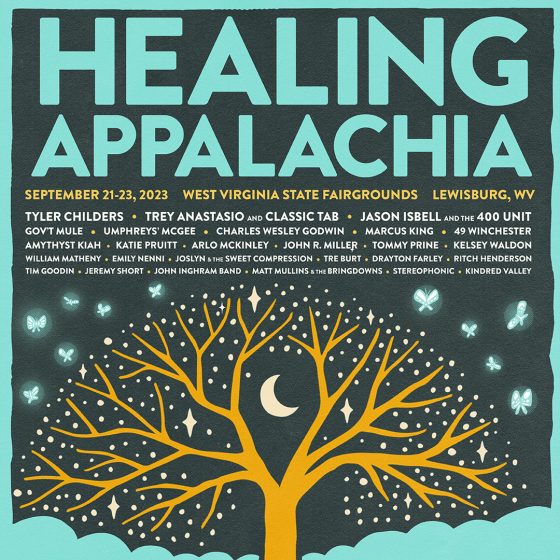
Healing Appalachia is just one of many such community-led, collective efforts born from within the region in recent years that is working towards effecting positive change while offering local, ground-up solutions to big, systemic problems. Their social media and website put it elegantly and succinctly: Their vision is a prosperous Appalachia, free from addiction. The opioid crisis has hit Appalachia, especially West Virginia and Childers’ home state of Kentucky, incredibly hard. When 26 people overdosed on one day in Huntington, West Virginia, in 2016, the mission for Hope in the Hills and Healing Appalachia was born.
At the time, Childers and his hardscrabble team were still climbing the music-industry ladder, building connections and community that would eventually grow and blossom into the multi-day event Healing Appalachia has become today. Childers’ friend and manager, Ian Thornton – who founded WhizzbangBAM, the booking and management company that represents Childers – together with festival program director Charlie Hatcher, Hope in the Hills board president Dave Lavender, and others took that tragic day in Huntington and turned it into an accretion point, around which they gathered and took action. Now, the festival has a local, annual economic impact approaching $3 million while raising thousands of dollars to be distributed to local, on-the-ground organizations and non-profits that specialize in addiction programs, recovery, support and healing for this long-oppressed region of the world.
We spoke to Ian Thornton and Dave Lavender for a two-part interview preview of Healing Appalachia, that dives into the work of Hope in the Hills and explores this grassroots music event’s community-first mission, that hopes to heal these music-steeped, underestimated communities in Appalachia from the inside out. Read our conversation with Ian Thornton below, read our conversation with Dave Lavender here.
Unable to attend the festival this weekend? You can donate to support the cause here.
Could you tell me a little bit about the background, the impetus, or the inspiration when you all were putting your heads together to make an event called Healing Appalachia. What was that like?
Ian Thornton: I’m very close friends with a fellow named Charlie Hatcher, who’s actually the festival producer for the event. The idea came to him first – you know, he tells the story better than I do – but he was on a fishing trip and got a call that yet another one of his friends had passed away from an opioid overdose. You know, we’ve all lost countless friends who we grew up with, went to school with, and I guess you’d say this one was the straw that broke the camel’s back. Charlie just kind of wanted to do something about it. He reached out to me and we got our heads working.
We’re not a recovery organization ourselves, right? But what we’re good at is the music side of things, producing events, working with musicians, playing music, inspiring people, bringing people together. That’s kind of how it was born. I talked to Charlie, who is friends with Tyler [Childers], too, and obviously this is something Tyler is very passionate about.
Tyler is also from Appalachia and he’s lost friends and family members, himself. The idea kind of spawned from thinking, “What if we do essentially a Farm Aid type of event?” The thought process was to have Tyler be the face of it and have all the efforts go towards recovery and the battle against the opioid epidemic here in Appalachia.
What I love about a cause like this is that the music itself is generative and restorative, and isn’t just a tool to generate interest or awareness. How do music and the arts play a role in a mission like this, in healing Appalachia, where the music can do the work as well as spotlighting the work? Do you agree or disagree?
IT: I certainly agree, and I think music is one of those things that ties everyone together, right? On a base level.
This one I think is in particular, it’s special because substance use and music are pretty closely tied together. A lot of musicians suffer from [substance abuse], and it’s part of the lifestyle, right? It’s part of what you see as “the rock and roll lifestyle” or whatever you call it. They kind of go hand in hand. We’re all more aware of it now, too, and we all know folks who have taken things to the extreme, then they’ve had to kind of pull back and get sober after feeling like they lost their way. We wanna show that sobriety and rock and roll – or whatever you want to call it – can live together harmoniously, just as easy as the party side of things.
A very good friend of mine, who’s no longer with us, Tom Morgan, he battled with sobriety for a long time. He was one of the guys that taught me my first chords on a guitar, right? And it got to the point, for him, where he couldn’t even go to shows locally, because they’re always at bars, right? Venues and bars are so closely associated that it can be difficult for someone who is in recovery.
I think that’s why the music side of Healing Appalachia, using music to bring awareness to this epidemic, really goes hand-in-hand. Even some of our performers – Trey Anastasio is performing this year and I think he’s over 15 years sober, now. Obviously with Phish, which is, you know, the jam band, you would assume, drug culture and everything else is associated with that. But, Trey’s only gotten greater in what he’s done with his musicianship. And, you know, Tyler even comments too that his artistry has improved and he’s been able to focus more on it since becoming sober and quitting drinking.
What is the importance of community and mutual aid to this mission, and how important is it that you all are not just people coming in from the outside, that you all have a stake in this – regionally and locally. Do you think that building community as you’re doing this is just as important as doing the work as well?
IT: Yeah. And, you know, to be honest, I think that’s where it has to start. You can look at things on these big levels and you can just get overcome or overwhelmed with how large the changes you’re trying to make are. At that point you get discouraged and you’re not going to do it.
Living inside Appalachia, we have heard all of the stereotypes. That we’re, you know, “Shoeless, toothless, drug-addled, fat…” We’ve dealt with these things and we’ve dealt with the oppression of the coal industry, of big money, of big pharma. All of this built on the backs of Appalachians.
I’ve always been someone who believes that you have to start locally. You have to have something that’s attainable. Something you can put your hands on and something that’s meaningful – it’s more meaningful to us because we’re in the fucking thick of it, right? I mean, Huntington, West Virginia, was almost the nucleus of the opioid crisis, and that’s the city I was born and raised in. We watched [everything] happen, the day there were 26 overdoses in one day due to a bad batch of heroin coming in. If you create something locally and have local people that are invested, what that does is it will not only grow the mission in and of itself, to help people become more aware. But one of my ultimate goals was always for someone else to see what we’re doing and it inspires them to do something in their region. Sometimes that’s all people need. They just need to be pushed over the hump to get the inspiration.
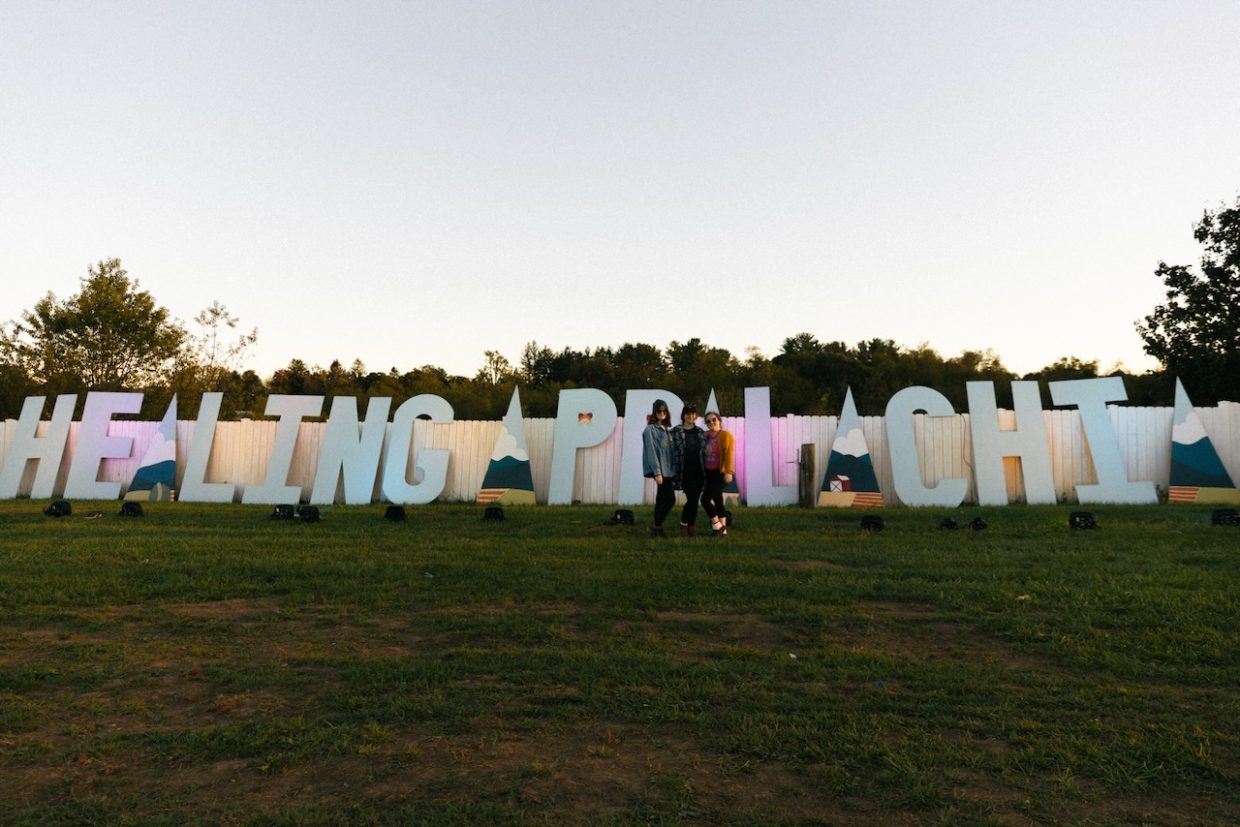
Do you have an idea of the scale of the economic impact of the festival, not only for your mission, but also for the area in general?
Yeah, so I’m going to refer to my fact sheet here. [Laughs] We’ve estimated $2.4 million in local economy spending in southern West Virginia and the Lewisburg area. That’s like hotels, gas stations, shops, restaurants, everything. On top of that, we donate money directly, too, and we pull a lot of volunteers from the region.
Like, the local high school basketball team will come and clean up trash. We’ve given more than $50,000 to local youth organizations in Greenbrier County alone. I think we had over 30 states and 6 countries represented last year in concertgoers.
It does make the point for you: You can have all of the apparatus and all the infrastructure, but if you don’t have the community, how do you take those numbers and turn them into something that means something to the people who are on the ground there in West Virginia? And involving them, too, right? Everything from the car lots to catering to cooking burgers out back.
To date, we have donated over $400,000 to recovery wellness organizations. That goes to over two dozen different organizations. We’re not a recovery organization ourselves, right? We’re facilitators. What we’re trying to do is give people that want to do that side of the work the means to do it. We don’t have this crazy application process for grantees. You don’t have to have a degree in grant writing to come to us. Tell us what it is you’re doing, tell us what you need. It could be needle exchange programs or money going towards Jacob’s Ladder, which is an organization for children that were born addicted. We try to hit all sides of it that we can, relying on donations as well as funds raised from the concert itself.
What bands, acts, or artists are you particularly excited about this year when you look at the lineup? It’s a pretty stout lineup!
To be quite honest, I’m pretty excited about the whole thing! When this started it was a small, one day event. I think we only had around 7,500 people show up to it. Last year, we had 16,000+ plus.
I’m personally pretty excited about Trey Anastasio and Classic TAB. I’m such a Phish fan, obviously, and can’t believe we’re having Trey play right before Tyler. I’m just really stoked about that! Also excited for Gov’t Mule, Isbell, 49 Winchester, who are cruising right now. And then, you know, keeping some local folks involved, too, your Kelsey Waldon, Charles Wesley Godwin. And Mr. Tommy Prime, who is fantastic and obviously, his father was an inspiration to a lot of these folks.
It’s really special to see some of these folks actually coming to us now. At first, you know how it is, you have to go beg people, “Hey… I’m doing this charity thing… You want to go play for free? We’ll get you in the local paper…” The “exposure” gigs, right? And now the pitch writes itself! The work that’s been done speaks for itself and people get behind it.
It goes back to the tie with substance abuse and music. You know, they go hand in hand. … I drink, right? It’s nothing that I’m personally [abusing], thankfully. But substance abuse is a thing that can get out of hand in the music industry.
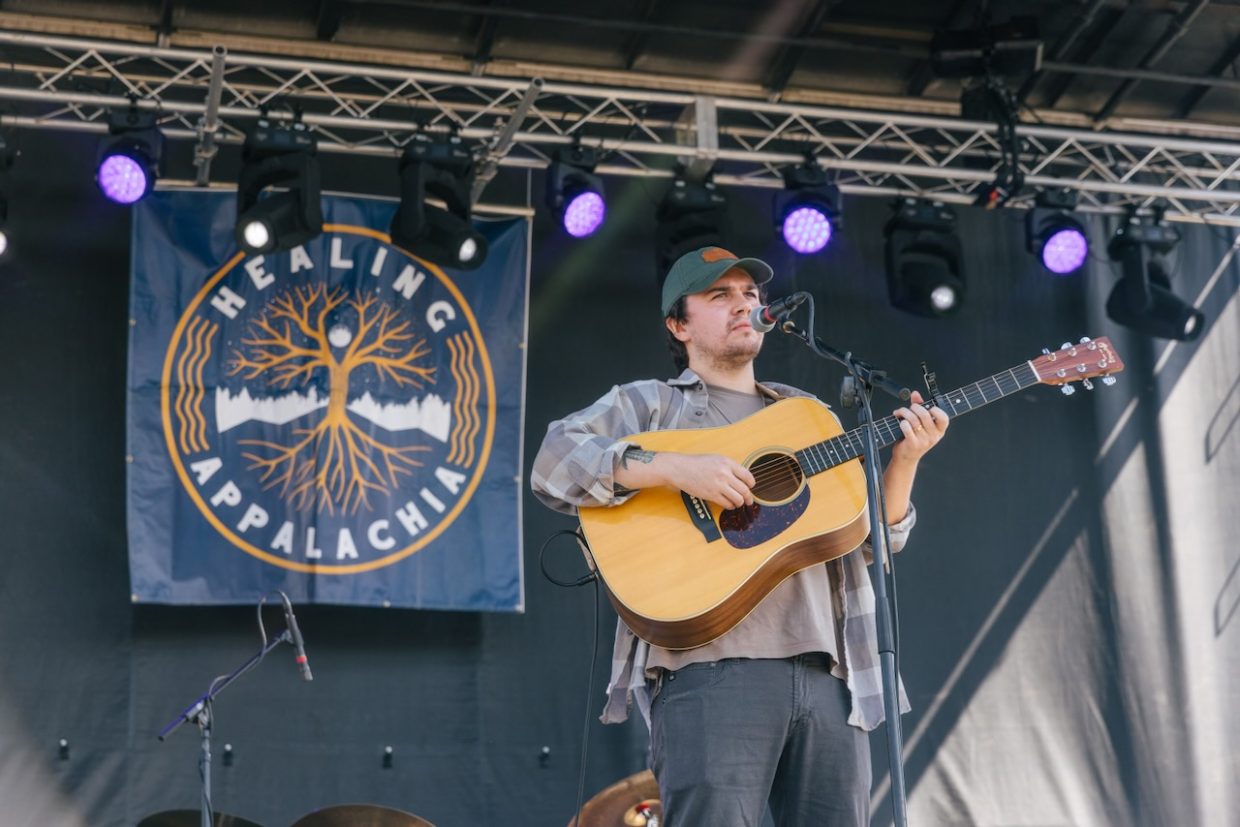
Let’s close with two questions and they feel very big, but don’t be alarmed: What does a healed Appalachia look like to you, personally? And what’s one thing that you’d like people to know about Appalachia?
IT: I mean in healing Appalachia, we just have to make it so that folks don’t feel trapped or alone. And to let them know, if it’s a battle they’re going up against, they’re not the first one to do it, even if it’s not an easy battle. It’s not going to be a mound to climb, it’s a goddamn mountain, right? So, having the availability and the resources in place so that when someone is ready to take this on, whether it be the first time or the 10th time, that they don’t feel ashamed or guilty about it. That they feel loved and like a human being.
Question 2, I think wherever you come from, rural, urban, or whatever, it’s the stigmas, right? I want people to know how those stigmas make an impact. The stereotypes of, “They’re fat, uneducated. They live in hills and don’t wear shoes, right?” The whole reason I do what I do, with Whizzbang in particular, I only work with acts from our region. And I do that specifically. When I started getting into all this, even before Tyler, just seeing the music that’s created here. We are not just one thing, right? Nobody is just one thing. You cannot judge a whole people by the bit of the iceberg that floats on top.
The stuff on top that’s the most visual, but you can’t judge a whole people by that. Appalachia is the most beautiful place in the country. Granted, I’m biased. I grew up there.
(Editor’s Note: Read part two, our conversation with Hope in the Hills board president Dave Lavender, here.)
Photos by Hunter Way / Impact Media
BGS 5+5: Charles Wesley Godwin
Artist: Charles Wesley Godwin
Hometown: Morgantown, West Virginia
Latest Album: How the Mighty Fall
Personal nicknames: Chuck
Which elements of nature do you spend the most time with and how do those impact your work?
I live in the hills of West Virginia. I’m in the woods every day of my life when I’m home. This is the setting for all of my work thus far. This place is a part of everything that I do whether I know it or not. I believe it gives me peace and a different type of rest as well. There’s a type of rest that I believe we all need that has nothing to do with laying down or the amount of sleep that we get. It’s just being out there wherever you may be where the world is still the way it was 10,000 years ago. Phone calls can’t reach you, texts don’t come in and there ain’t nothing to check on except whatever it is that you’re doing or thinking about at that moment. I get that kind of rest when I’m hunting, scouting for deer, fishing, or hiking.
What was the first moment that you knew you wanted to be a musician?
I remember I’d just played my first gig ever for a lingerie fashion show in Tartu, Estonia, while I was studying abroad. I got handed 150 euros after the show was done and I thought to myself, “Oh my God. I’ve figured it all out. This is the best job in the world. This is what I’m going to do.” Drinks were on me that night.
What’s the toughest time you ever had writing a song?
“Coal Country” was a bear for me. The subject matter of that song is such a tender subject that I had to absolutely think through every little piece of every single idea I had about “coal.” I had to make absolutely sure I knew exactly what I felt and why. It was painstaking to write that song. I think it took about two months and I was working on it in some form or fashion just about every day. I believe it improved my songwriting ability considerably going through that one.
What’s your favorite memory from being on stage?
My favorite memory is Kathy Mattea (the queen of West Virginia country music) calling me out onto the Mountain Stage to perform at the Culture Center Theater in Charleston, West Virginia. It was one of the purest feelings of joy in my life. I’ll never forget it and it’ll always be one of the milestones that I’m most proud of.
Since food and music go so well together, what is your dream pairing of a meal and a musician?
Ok, what pops up in my head immediately is a Chris Knight show at The Hamilton in Washington, DC (real fancy spot) and that night on the menu they serve venison backstrap, garden green beans, morel mushrooms, and mashed potatoes with ramps. Bulleit bourbon old fashioneds are the cocktail for the night. I’d go into debt for a show like that.
Photo Credit: Harry Ilyer
A Minute in West Virginia with Charles Wesley Godwin
Welcome to “A Minute In …” — a BGS feature that turns musicians into hometown reporters. In our latest column, Charles Wesley Godwin takes us through West Virginia, a state that inspired much of the music on his notable new album, Seneca.
https://www.instagram.com/p/BoDAvi3F4Qb/?utm_source=ig_web_copy_link
Mountaineer Home Football Game
There’s no place like Morgantown, West Virginia on a football Saturday. I once heard that Morgantown accounts for one percent of the nation’s beer sales on game day. I have no idea if that’s true, but I like it. Make sure you don the ol’ gold and blue, haggle with a ticket scalper, bring a case of beer and you’ll be sure to get invited to join a tailgate in the Blue Lot. Afterwards, go fill up at Black Bear Burritos and continue drinking your face off with dozens of WV craft beers. A wise man once said, “They shouldn’t have played the ol’ gold and blue!” – the late, great, coach Bill Stewart.
https://www.instagram.com/p/Bsl9iz0Fr2D/?utm_source=ig_web_copy_link
The Purple Fiddle
Tucked away in beautiful Thomas, West Virginia, The Purple Fiddle is putting on some of the best shows in the country almost every night of the week. If you want to experience a little piece of Appalachian heaven, go dance your boots off at a Purple Fiddle show. Then, be sure to take the weekend to enjoy Thomas & Davis, Blackwater Falls, Canaan Valley and Dolly Sods. The owner, John Bright, has his ear to the ground like no other. He was opening his doors to bands like The Avett Brothers, Greensky Bluegrass and countless others back when they were being passed over by comparable venues. The Fiddle has welcomed me ever since I got started, and I’m very grateful for that.
https://www.instagram.com/p/BaC_9UUA8aE/?utm_source=ig_web_copy_link
Fly-Fishing
There’s no better place to wet your fly line than West Virginia. Of course, I might be biased, but West Virginia’s got some of the most beautiful trout streams and rivers in the world. Go fishin’ on the North Fork of the South Branch, Elk, South Branch of the Potomac, Dryfork, Cheat, Greenbrier, Potomac, Shenandoah, New and countless other rivers. Find yourself a nice little tributary and you can catch native trout all the way up the holler. Hell, come see me and we’ll fish Seneca Creek.
https://www.instagram.com/p/BlymVdtAyKj/?utm_source=ig_web_copy_link
Muriale’s Restaurant
One little-known fact outside of our borders is that West Virginia is home to a huge (by West Virginian standards) Italian population in north-central WV. Like a monument to their greatness, Muriale’s Restaurant stands in Fairmont right next to Interstate 79, calling all travelers to her great table. If Muriale’s could speak, I’d imagine she’d cry out her own version of Emma Lazarus’ “The New Colossus.” Something along these lines, “Give me your tired, your poor, your huddled masses yearning to try the meatball, the wretched refuse of your teeming states. Send these, the homeless, tempest-tost to me, I will feed them well!”
https://www.instagram.com/p/BnRIesFgmah/?utm_source=ig_web_copy_link
Seneca Rocks
Standing high above the land where generations of my family have lived and died, and the Native Americans before them, the rocks remind us all of how long the forces of nature have been at play. I won’t begin to act like I know the ins and outs of how it was formed, but I’ll just take geologists’ word for it that it took hundreds of millions of years. You can hike right up to the top of this crag and I promise it’ll give you a hell of a view. One so nice in fact, that I asked my wife to marry me there.
https://www.instagram.com/p/BnxaOIuhYgb/?utm_source=ig_web_copy_link
Mothman Festival
Each year, on the third weekend of September, comes the Mothman Festival in Point Pleasant. There’s music, there’s vendors, there’s the Mothman museum, there’s wild, ancient alien type dudes tellin’ all kinds of crazy stories. Go check it out. It’s a really fun time.
https://www.instagram.com/p/Bs-6njLgZF_/?utm_source=ig_web_copy_link
Greenbrier Valley Brewing Co.
Just outside of Lewisburg, Greenbrier Valley Brewing Company is spitting out some of the best beer in the world. They’ve got something that’ll fit your taste no matter what kind of beer drinker you are. Bring your dog and enjoy a Devil Anse, Zona’s Revenge, Mothman or Wild Trail. While you’re at it, just take the whole week to enjoy Lewisburg, The Greenbrier, and all that is Almost Heaven. It’s gorgeous down that way.
https://www.instagram.com/p/BYyeHCLhfgL/?utm_source=ig_web_copy_link
Live on the Levee
On the banks of the pristine waters (just kidding) of the Kanawha River, there’s a summer series of concerts in downtown Charleston every Friday night. For Live on the Levee, they bring in a bunch of killer national touring acts to put on a hell of a show for the good people. Thousands of West Virginians from high and higher come out to enjoy the music, the food trucks and spend a night on the town. Afterwards, if you didn’t get enough music to tickle your fancy at the Levee show, just cross the street to catch another show at The Boulevard Tavern.
https://www.instagram.com/p/BTZp1R8hJQl/?utm_source=ig_web_copy_link
Country Club Bakery
Pepperoni rolls are a staple of the Mountain State. They were originally created as a lunch food option for the coal miners. Guiseppe “Joseph” Argiro sold the very first one at Country Club Bakery in 1927. The comfort food of all comfort foods is at your fingertips in small bakeries and gas stations all around the state, but if you stop by Country Club to a pick up a fresh dozen, you’re in for a treat. I feel a deep sense of sadness every time I’m looking for a proper gas station snack out of state. I don’t know how y’all make it without roni rolls.
https://www.instagram.com/p/Bm3J_KmAtQz/?utm_source=ig_web_copy_link
New River Gorge
The New River Gorge Bridge sits 876 feet above the ancient New River. While driving across it, it’s sure to freak out anyone scared of heights. There is an annual Bridge Day festival where adrenaline junkies from all around the world meet up and BASE jump off of it. For those of us who are not so extreme, myself included, you can whitewater raft down the New River guided by Ace Adventure. After you’re done on the river, you can grab a bite to eat at Secret Sandwich Society in Fayetteville, and catch a show at The Grove.
https://www.instagram.com/p/Bsgot8YHP5I/?utm_source=ig_web_copy_link
Snowshoe Mountain
Snowshoe is home to the best skiing on the east coast. Come November, the snow is already piling up and it doesn’t melt all the way until May. If skiing’s not your thing, you can take a snowmobile tour, ride the air tubes, enjoy the spa and catch a show in the winter village. If you miss the snow, don’t worry, you can still go mountain biking or enjoy some guided fly-fishing.
Photo of Charles Wesley Godwin by Ashley Stottlemyer
LISTEN: Charles Wesley Godwin, “Coal Country”
Artist: Charles Wesley Godwin
Hometown: Morgantown, West Virginia
Song: “Coal Country”
Album: Seneca
Release Date: February 15, 2019
In Their Words: “This song is about the coal industry in West Virginia in the past and present. It’s my best attempt to articulate, through music, the mixed bag of good and bad that it’s brought to us. On one hand, it has given economic mobility to countless families, including my own, in the 20th and 21st centuries and it has contributed greatly to the economic strength of the United States these many years. On the other hand, it has also taken the lives of thousands of miners, scarred the land, and has a somewhat dark history of companies taking advantage of workers and violating their rights. This song was completely influenced by my father. He’d been crawling in coal for years when he was my age, so I just wanted to make something beautiful out of that sacrifice. This was the only way I knew how.” — Charles Wesley Godwin
Photo credit: Samantha Godwin
